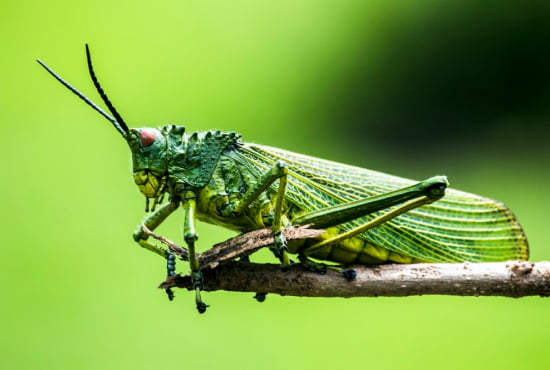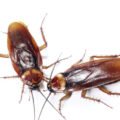Basic Information
If you’ve ever had the misfortune of hearing a grasshopper in the wild, you know that they’re incredibly loud and annoyingly hard to kill with your bare hands. They certainly have some bizarre characteristics, and they make up an intriguing subset of the Orthoptera order of insects, which
also includes katydids and crickets (who are way less annoying). Let’s take a look at some interesting facts about grass hoppers!
The grasshoppers comprise a large group of insects with great variety in size and coloration. They are sometimes known as short-horned grass hoppers to distinguish them from crickets, which have longer antennae. Typically, they walk very quickly in an upright posture and hop when disturbed. Like many other insects, they go through complete metamorphosis with egg, nymph, and adult stages before becoming a full adult. The juveniles are brightly coloured with red or yellow warning colours to warn potential predators that they may be venomous. Most species possess hind legs that are enlarged for jumping or flying; some species can fly for up to 160 meters.

Types of Grasshoppers
Green Grasshoppers – The name green grass hopper is a bit of a misnomer because these insects can come in a wide variety of colours. One study identified 10 different shades of green across 24 species. Most tend to be some shade of brown or green, however. This is especially true for young specimens. Older grass hoppers are more likely to be white or yellow with darker patterns on their bodies. Other Colours: Some other species have red stripes and others have pink coloration along with their wings. Still, others are purple and blue-grey with yellow spots. These variations make it challenging to categorize all members of Caelifera as green grass hoppers!
Basic Anatomy
Grasshoppers share a common basic body plan with many other insects. The head and thorax are fused into one unit, creating a prothorax. The mouthparts and compound eyes are on top of their head while their two antennae are located at their sides near where their legs would be. A grasshopper’s four wings extend out from behind its abdomen which contains its six legs. Grasshoppers also have an abdominal ganglion that acts as a brain to control them as every other insect has. Finally, grasshoppers possess external cerci. These bristles can either be used for sensory purposes or to protect them from predators by latching onto something to prevent them from being eaten.

Lifespan
Grasshoppers have a lifespan of 1 to 3 years and in some cases, they can live for 5 years or longer. They reach sexual maturity quickly which is called an ephemeral cycle. In other words, it takes them a short amount of time to mature and reproduce. Life expectancy is mostly affected by climate and habitat. Grasshoppers that live in arid areas usually don’t live as long as grass hoppers living in marshy areas because arid areas don’t offer as many resources for food and shelter as marshy areas do. Due to these reasons, grass hoppers tend to be more active in summer than winter so they are more likely to encounter predators before winter comes.
Diet and Other Behaviour
Grasshoppers primarily eat vegetation; however, a few species feed on animal matter. Grasshoppers consume various plants and grasses. Some species eat only one type of plant while others are opportunistic feeders that eat a variety of available plants. Many grasshoppers also supplement their diets with ant eggs or larvae, earthworms, and other invertebrates. Some carnivorous species will even attack small lizards or mammals to survive in certain situations. A few species supplement their diet with nectar from flowers. Grasshoppers vary greatly in their overall diets but tend to be vegetarian for most of their lives.

Incredible Facts
- Grasshoppers are a diverse group of insects found in most ecosystems on Earth.
- The name comes from their long slender legs and jumping ability.
- Grass hoppers eat vegetation or animal waste and can be beneficial to ecosystems through pollination or seed dispersal.
- However, they can also cause great harm to humans as pests of farm crops or lawns.
- The heaviest species is Mecistocephala forties at over 500 gm while Tettigidella extensicollis is one of very few known flightless grasshoppers weighing only 0.21 gm—about that of three grains of salt.
- Most grasshoppers are herbivores but there are some carnivorous species as well; these typically feed on eggs, larvae, and sometimes adult insects.

